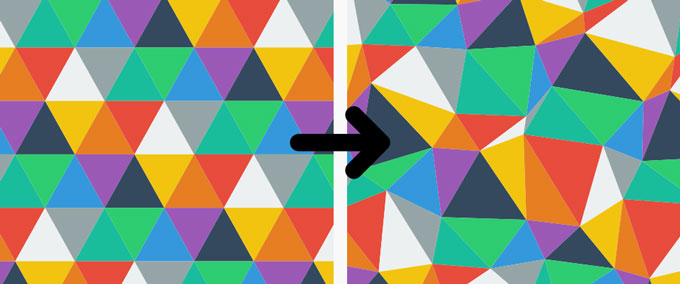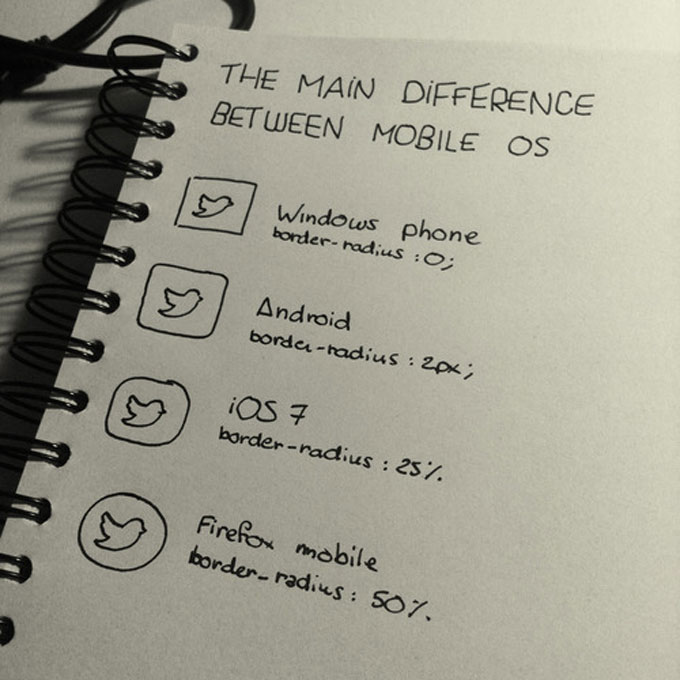Lichtenstein is ready to install
12 November 2013
50 years ago (well 49 to be correct), Roy Lichtenstein made this famous canvas representing a lady on the phone saying "Oh, Jeff.. I love you, too... but...". It become one of the most popular work about the pop-art period.
As a simple admirer, I wanted to make the 2013 version. The technology has changed, our way to comminucate too, but the message stay the same.
‘‘Let's wait few years before the Google Glass version.’’
permalink
30 October 2013
It’s not in my habits to criticise a nice project, but when I see so many people claiming the perfect solution, I wanted to show the dark side of the moon.
I’m talking about the project Phonebloks. This project appeared on kickstarter few months ago. The idea is to make a modular phone where any piece can be replaced to can customise your phone in function of your needs. At the same time, you don’t throw it away if a part breaks, like the battery, you just replace the broken bit. The plans would be open source and anybody can contribute, and any manufacturer can sell bloks.
Of course, in the idea it looks very nice: ecological, open and modular. The definitive solution to the ‘planned obsolescence’ problem. Well..
In the first seconds of the video, they explain that everyday, millions of electronic devices are thrown away because on of their component is broken. Then to illustrate this, there’s an animation with a lot of devices… which last. I’m sorry but I’ve never seen a broken Nokia 3310. Except if you did it explicitly with all your energy, that is really rare. Let’s continue with the DVD player and Discman, or this simple camera. I’m pretty sure, you have one in your closet, taking the dust, or you thrown it away. Was/is it broken? No? So why are you not using it right now? Simply because something new replaced it. Why don’t you use your discman? Probably because you have an iPad or a smartphone. One of the worst example was when plasma TV arrived on the market. How many people bought one when they had a tv in working order? Most of our electronic waste come from this, a new version of a product arrive on the market: thinner, more powerful, sexier. It’s enough to let people buy it. The problem come from here first: if people were only buying stuff they need, we probably wouldn’t waste electronics and have more time to focus on important things in our life (ok, I shouldn’t take my personal problems as general).
Then let’s talk about this modularity. During the last years, manufacturers tends to set everything on the same motherboard, making the device more difficult to repair but smaller. I don’t think a smartphone of the size of a the first Nokia will interest a lot of people, even if you can set an other battery instead of a camera.
And the point about this is, why Phonebloks could escape to this rule? At some point, the community will launch a new version, smaller, more flexible, and not compatible with blocks from the previous version. Ta-dahh! And the first version become obsolete. Your Phonebloks v1 can join your discman, DVD reader, tamagochi or Furby. Even if they make the best conception ever, the technology keeps evolving, components are becoming smaller, or using new protocols or techs. Phonebloks will have to respect the rules to stay up to date, so launch new versions.
This project is good idea, but we don’t live in a teddy bear world. The principle of working all together to make the best phone ever (= modular and open source), is brilliant. We just have to see what Linux has become, we can only be optimistic!
Unfortunately, I think there’s other priorities. Let’s have a look on what happen to your previous phone. I might be wrong but I think your previous phone is still working. Might be slow or don’t take the charge anymore, but still works. You were at the end of your phone contract, so you took the opportunity to take a new contract with the last version of your device.
And for the most clumsy of us, I guess you broke an important part of it. I can’t blame you, the smartphone screens are pretty vicious about that. Just one shock, and it’s done.
From this common case, I think there’s two things to consider:
First, oblige manufacturer to make product which can be repaired easily. Which mean to not use proprietary screws or glue, make the most important pieces easy to access (battery, hard drive, RAM), and I would even say to can dismantle the device completely without problem, even for a noob. Block any trick which encourage to buy a new version than repair the current one. And long support. Of course, it’s against manufacturer mind. Making a product which last, means less profits.
Also oblige manufacturers to repair for free any device where there’a series problem. It’s just unacceptable to see Sony and Microsoft doing nothing about YLOD PlayStation3 and Rings of death on XBox 360. Then when you see the price of the motherboard quite close to a brand new version of the console: there’s something wrong. The problem is the same on iDevices from Apple. Check the price the replace the battery in an Apple Store, and you will understand.
Then my favourite topic, the software updates. I’m one of the rare to haven’t updated my phone to iOS7, I’m still on 5.0.2. Yes, ouch, that’s old, I’m subject of laughing and curiosity. I just don’t get the point to update your device for features you won’t use (or won’t be compatible). If the point of the update was about speed and optimisation, that would be interesting. Unfortunately it’s not the main topic. So I prefer to stay on an old version, which works perfectly and don’t slightly transform my phone to a brick. Unfortunately everything push you to update: apps needs the latest OS (even if the app don’t use the new OS features), or the device itself pushing you to update. Once the update installed, it’s too late to comeback. Sorry to say that but, what da’f**k? Why? It’s just a part of the process to make it obsolete quicker. This should be reviewed to allow people to have the choice.
Last point, educate people. Unfortunately on that point, it’s a bit hopeless. I was talking about make our devices easy to repair. But, even if you explain to the mass the good sides of it, and they are convinced. They will prefer to buy the latest iPhone for the useless killer feature than make the system more responsible. I don’t blame them, we are all sensitive to different topics.
Maybe I’m wrong, probably. Maybe Phonebloks will be the first step to a community movement, or become a device for geeks like the RaspberryPi. So we will see..
permalink
27 October 2013
For people who doesn’t know me, I’m a huge fan of vector drawing. A pure Adobe Illustrator addict. These last time I’m working on a pattern I’ve used few months ago : triangles.
It’s looking nice and simple, but take fuckin ages. It’s like makin doodles, for a simple A4 page, it can take few evenings. And for my current illustration I need a background of random triangles in greyscale. But before to become bored and crazy, I realised it could be funnier to ask the help of JavaScript. Of course the following involve HTML5’s canvas and my favourite library of the moment : two.js
How to start? That is the question.
At the start, if the triangles fit all together we should have the same pattern as.. what example I could give.. the scene of the Daft Punk during their 2007 tour (here is a picture for in-cults). At the moment, it’s quite easy : you give the size of your map, and the line height (or triangle height if you prefer).
Once done, you just have to add one parameter which make all the magic : freedomArea. What is that? it simple, this parameter is an integer, it define the freedom area size around a point. At the moment the triangles are too regular, tro straight, and I want mess. So the idea is simple, I want the points to be free to move from their original position. And I limit them with the freedomArea parameter. Smaller is this param, more straights the triangles will be. Higher the value is, messier the triangles will be.

Happy of the result, I realised a problem I didn’t mention. How can I export this? The canvas is nice, but I want it in my Illustrator. Unfortunately, two.js doesn’t have an export function. So let’s do that in my dirty script, and thank God the SVG is XML. Once the map generated, the SVG dom is in my console, I just need to put this in a file and the magic is mine.
This make me realised that two.js would probably need an SVG export method. It’s probably time to give a fork.
Update: Well, I actually finished the script to realise stupidly that I can make a copy of the canvas content : it’s the SVG dom. F.A.I.L.
I would say my SVG code is cleaner (no useless attributes), but it’s a fail anyway.
permalink
26 September 2013
Advertising is an important part of the web. It’s a way to monetise the audience and get revenue. But sometimes I’m just a bit scared about the consequences of it. Not about the visual pollution (that’s another topic) but about the data given to these advertising company.
The example came from an iOS application, it was just a little banner at the top of the UI. With a simple packet analyser, I discovered the request to ‘generate’ a banner is made in a simple GET request in HTTP (not secure, of course, so sniff-able).
Here is one of the best points we can find :
Let’s begin by the general informations : your OS platform with version, your language, my career network, my current connection (3g/Wifi).
Then the dirty side : my exact position (altitude/latitude/longitude), my sexual orientation, then my Twitter ID and Facebook ID (as long as the app can have access to it).
Scary isn’t it?
What’s the point to give the exact position? A ‘blurry’ one should be enough to purpose local advertising.
But the worst is to let transit this data in a non secure protocol. Let’s imagine you have a malicious app installed on your phone, it can know all these informations without asking your permission.
OK, it’s true, Facebook use your personal informations to generate advertising. But the difference is : they don’t give them to somebody else (except the NSA). And especially they don’t transmit them in clear in the nature.
permalink






